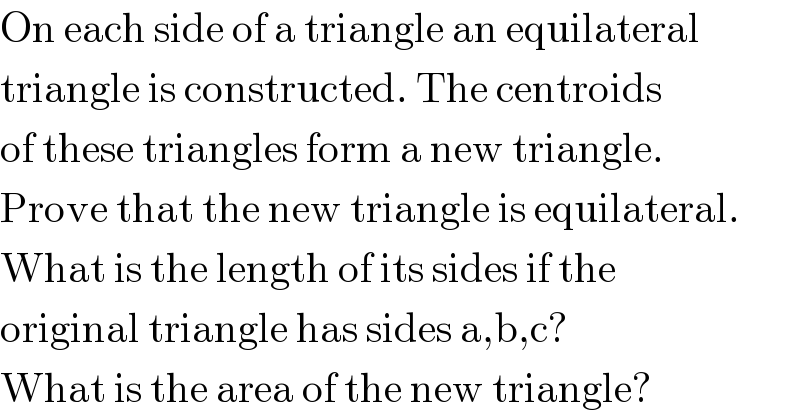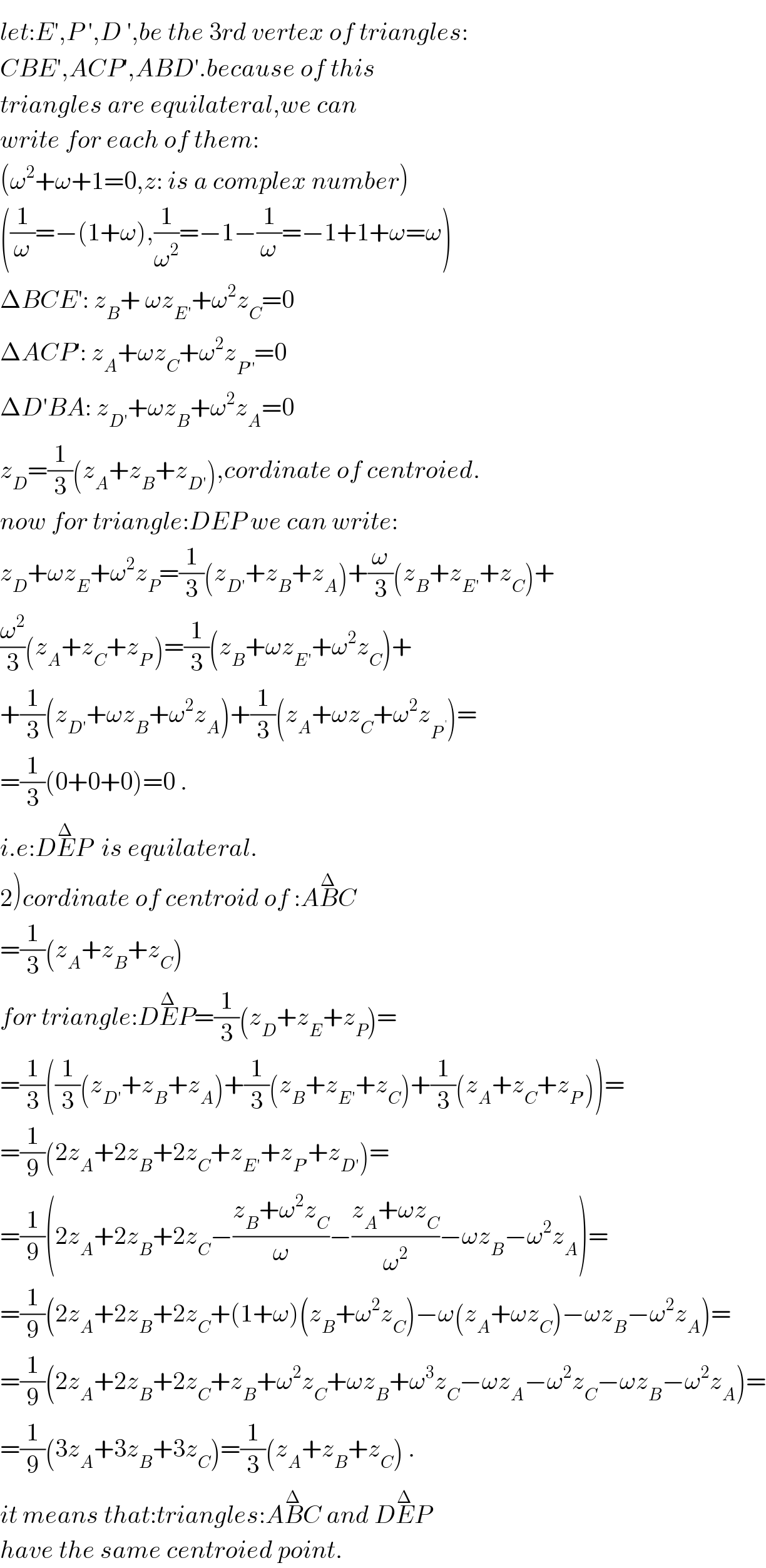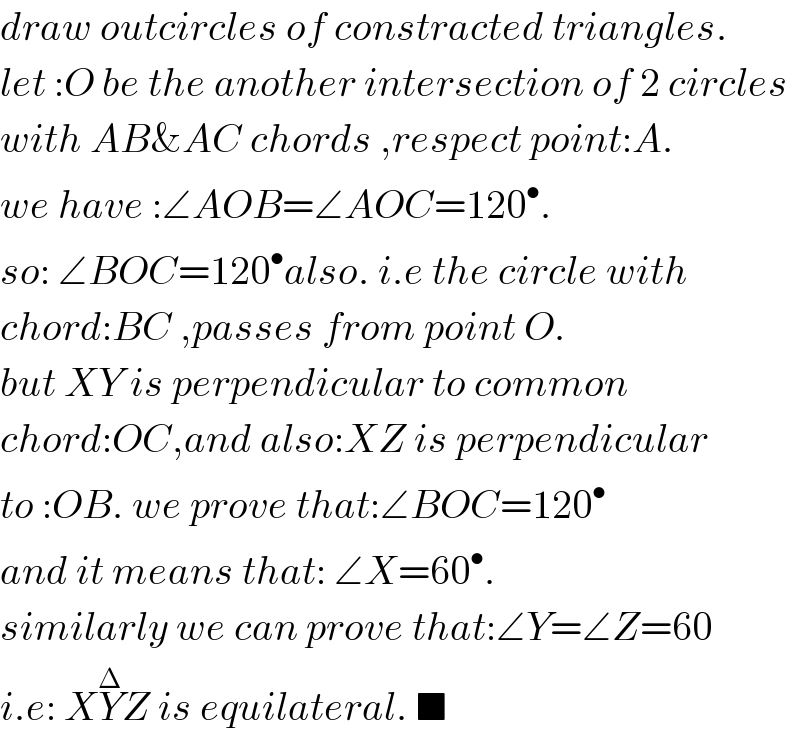
Question and Answers Forum
Question Number 15908 by mrW1 last updated on 15/Jun/17

Commented by mrW1 last updated on 15/Jun/17

Commented by ajfour last updated on 16/Jun/17
![side of the equilateral triangle formed is : s=(1/(√3))(√(a^2 +b^2 +2abcos (C−((2π)/3)))) therefore its area is : A=(1/(4(√3))) [a^2 +b^2 +2abcos (C−((2π)/3))] where C=cos^(−1) (((a^2 +b^2 −c^2 )/(2ab))) . please confirm, Sir. answer seems somewhat messy..](Q15968.png)
Commented by ajfour last updated on 16/Jun/17

Commented by mrW1 last updated on 16/Jun/17
![I try to go on with your result: cos C=((a^2 +b^2 −c^2 )/(2ab)) sin C=((2(√(p′(p′−a)(p′−b)(p′−c))))/(ab)) with p′=((a+b+c)/2) cos (C−((2π)/3))=cos C cos ((2π)/3) + sin C sin ((2π)/3) =(1/2)(−cos C+(√3)sin C) =(1/2)[−((a^2 +b^2 −c^2 )/(2ab))+2(√3)((√(p′(p′−a)(p′−b)(p′−c)))/(ab))] =(1/(2ab))[−((a^2 +b^2 −c^2 )/2)+2(√3)(√(p′(p′−a)(p′−b)(p′−c)))] s=(1/(√3))(√(a^2 +b^2 +2abcos (C−((2π)/3)))) =(1/(√3))(√(a^2 +b^2 −((a^2 +b^2 −c^2 )/2)+2(√3)(√(p′(p′−a)(p′−b)(p′−c))))) =(1/(√3))(√(((a^2 +b^2 +c^2 )/2)+2(√3)(√(p′(p′−a)(p′−b)(p′−c))))) =(√(((a^2 +b^2 +c^2 )/6)+((2(√3))/3)(√(((a+b+c)(b+c−a)(c+a−b)(a+b−c))/(2×2×2×2))))) =(√((a^2 +b^2 +c^2 +(√(3(a+b+c)(b+c−a)(c+a−b)(a+b−c))))/6))](Q15990.png)
Commented by mrW1 last updated on 16/Jun/17

Commented by mrW1 last updated on 16/Jun/17

Commented by b.e.h.i.8.3.4.1.7@gmail.com last updated on 19/Jun/17

Answered by b.e.h.i.8.3.4.1.7@gmail.com last updated on 19/Jun/17

Commented by b.e.h.i.8.3.4.1.7@gmail.com last updated on 19/Jun/17

Commented by mrW1 last updated on 19/Jun/17

